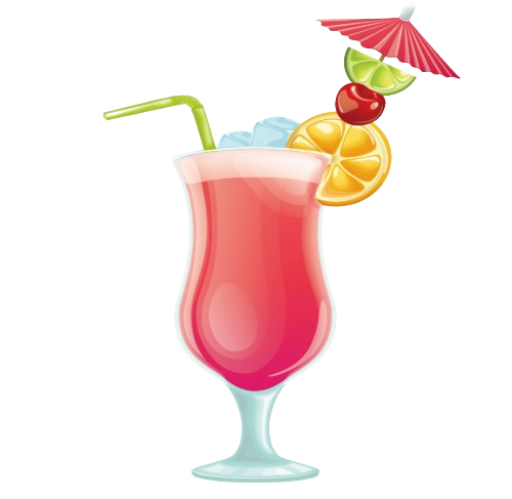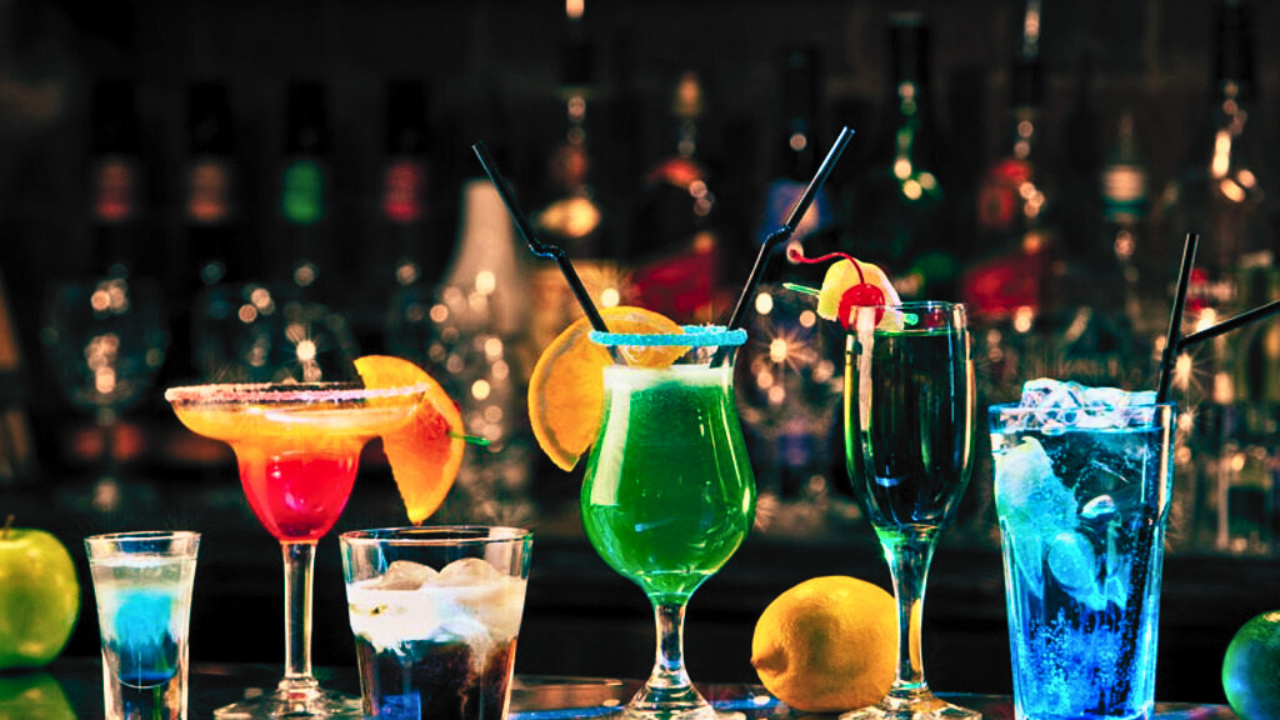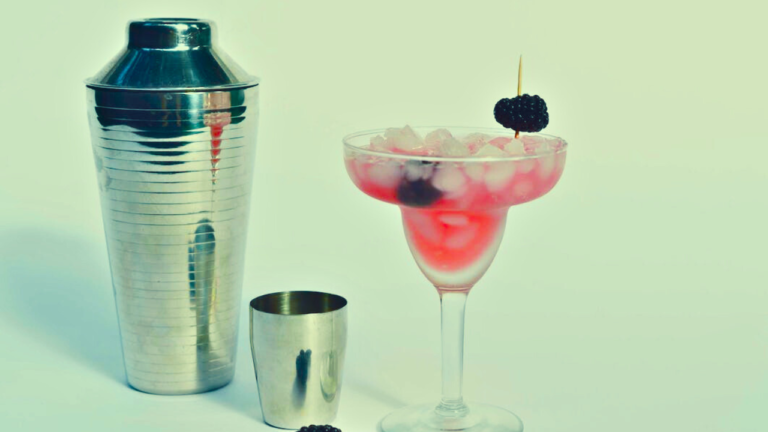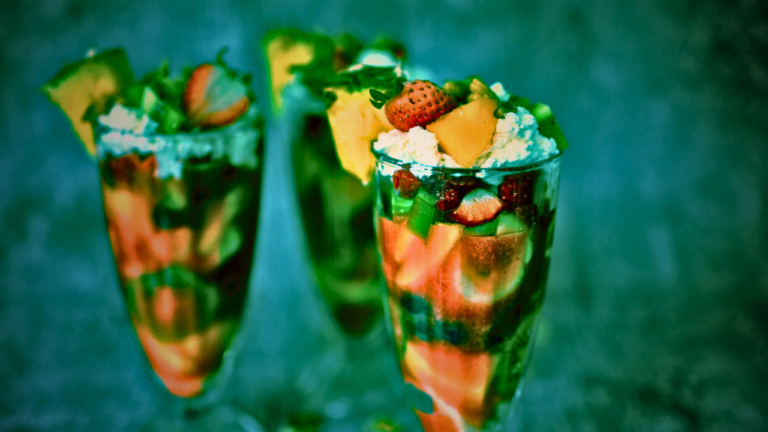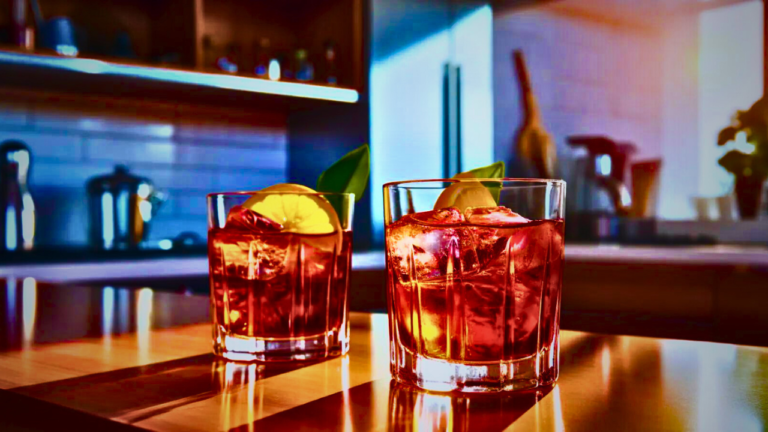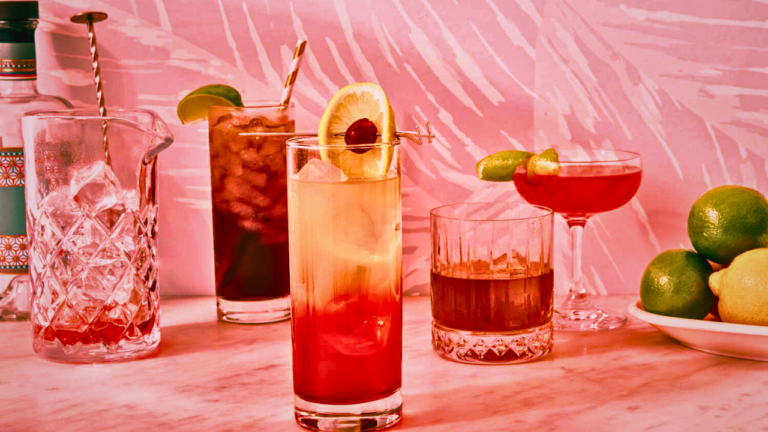Where Did Cocktails Originate?
If you’ve ever sipped on a cosmopolitan, mojito, or an old-fashioned, you’ve taken part in an age-old custom wrapped in taste, culture, and history: the consumption of cocktails. But have you ever stopped and pondered, Where did cocktails originate?
Cocktails, those exquisite concoctions of spirits, sweeteners, bitters, and more, have certainly evolved over centuries. Like any historical journey, the origin of cocktails is not just a straight line but a winding path filled with fascinating stories, intriguing tales, and engaging facts.
In this article, we’ll journey back through time to explore the intriguing origins of cocktails, shedding light on where and when they were first crafted. We’ll also delve into the evolution of these delightful drinks, taking a look at the original ingredients used, and even exploring some interesting stories and legends that revolve around the creation of specific ones.
If history could be distilled into a bottle, it’s fascinating to think that every cocktail would have its own unique tale to tell.
So grab your favorite drink, sit comfortably, and let’s embark on the captivating journey of cocktails’ history.
Read also: Why Are Mixed Drinks Called Cocktails?
What are the earliest known references to cocktails?
Imagine this: you’re sitting in a small tavern in the early 19th century, and you notice a uniquely balanced mix of spirits, water, sugar, and bitters being served to fellow patrons. You’re witnessing what might be one of the earliest instances of cocktail creation!
In fact, the first documented use of the term “cocktail” was found in a publication from upstate New York, an 1806 issue of “The Balance and the Columbian Repository,” where it was defined as a stimulating liquor composed of spirits of any kind, sugar, water, and bitters.
But where might the term cocktail actually have come from? Well, that is a story spun out of legend, farmyard tales, and a dash of humor. Some believe it was related to the tradition of French vineyard owners including a rooster’s tail, or “coq’s tail,” in their wine concoctions.
Others suggest it is derived from the Mexican “coctel,” a drink used as medicine. Still others argue that it’s from the English term “cock-ale,” a hot concoction sipped in the morning, much like today’s coffee or tea.
Regardless of its name’s provenance, it’s clear that the cocktail as we know it was beginning to take shape in this era. However, it should be noted that mixed drinks themselves predate even this first reference.
For example, in the 17th and 18th centuries, concoctions known as “punches,” often featuring a mix of spirits, fruit juice, spices, and other flavorings, were popular communal beverages. These would be served from a large bowl into individual drinking vessels, predating the tradition of individually mixed drinks that we associate with modern cocktails.
Interestingly, it seems that the communal nature of these earlier mixed drinks grew less popular as time went on, making way for individual beverages crafted to each patron’s tastes. Cocktail culture truly began to take root when these personalized mixed drinks, each equipped with their own unique combination of spirits and mixers, started to dominate the drinking scene.
Which countries or cultures have a claim to the origins of cocktails?
So, you’re itching to know: which cultures can lay claim to the delicious melding of flavors we call cocktails? Well, it doesn’t paint a straightforward picture, but several cultures have a place in the cocktail’s complex history.
America
First, let’s take a historical journey to America. The United States holds some of the earliest references to the term ‘cocktail’ in its literature. The Farmer’s Cabinet, a newspaper from the early 1800s, offers a glimpse into how cocktails were seen in the larger context of American drinking practices. The term was used to describe a stimulating liquor composed of spirits of any kind, sugar, water, and bitters, which led to the creation of the Old Fashioned, a cocktail still popular today.
Europe
Meanwhile, across the pond in age-old Europe, drinks akin to modern cocktails were present, albeit not referred to as such. Dating back to the Middle Ages, ‘purl, a warm beer mixed with gin, wormwood, and other additives, was a popular morning pick-me-up. In England, the creation of punch, a party drink composed of spirits, water, lemon, sugar, and spices, indicates a long-standing tradition of mixed drinks.
Asia
Not to be overlooked, Asia also had a role to play. In ancient China during the Tang Dynasty, a drink named ‘hunch punch’, a mixture of rice wine, honey, and various fruits and flowers, was served at royal gatherings—not too dissimilar from the cocktail parties we know and love today!
Pirates
Seafaring multiplayers like pirates and naval officers brought their own contributions. Naval men often mixed their rations of rum with the juice of limes or lemons to prevent scurvy, accidentally creating what we now refer to as a daiquiri or a dark ‘n’ stormy.
As you can see, the cocktail doesn’t belong to one culture alone; it is truly a global concoction. Mixed drinks have been a part of many cultures across different continents and timelines, morphing and evolving into the diverse range of cocktails we enjoy today. Our taste buds are certainly richer for it!
Read also: Do Jack Daniels Country Cocktails Have Whiskey In Them?
What were the original ingredients used in early cocktails?
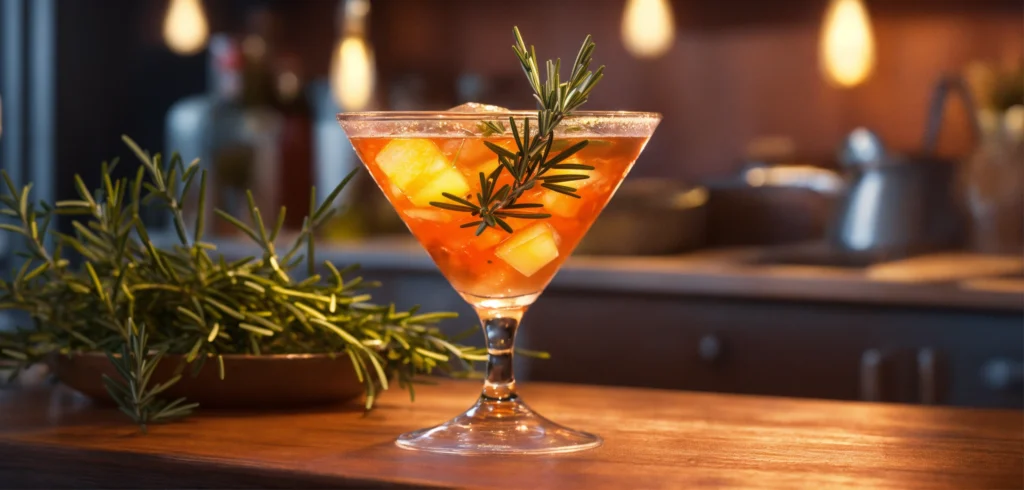
Once upon a time, the cocktail game was quite different from what we know today. The original ingredients revolved around alcohol, sugar, water, and bitters. Let’s dive deeper into what made up the earliest cocktails.
Spirits: All cocktails, by definition, require a spirituous ingredient. In the early days, the choice typically lay among rum, whiskey, brandy, and gin. These liquors gave the cocktails their kick and were fundamental to the flavor profile.
- Rum, primarily sourced from the Caribbean, was the base for many of the first cocktails due to its sweet, sugary base.
- Whiskey, especially American rye, was popular for its spicy and robust notes.
- Brandy has been an enduring choice due to its rich, fruity flavor.
- Gin, with its unique application of botanicals, introduced a new complexity to cocktail concoctions.
Sugar: Sugar was vital to softening the spirits’ harsh edges and balancing the drink. This was commonly added in the form of a sugar loaf (a block of refined sugar).
Water: Cocktails were often watered down to make them more palatable. More often than not, the water was added in the form of ice, which also served to cool the cocktail, enhancing its enjoyment.
Bitters: Early cocktails also commonly contained bitters. These herbal alcoholic preparations added complexity and depth, toning down the sweetness of the sugar and enhancing the flavor of the spirits. A world of variety was available, depending on the mix of bitter herbs used.
It’s truly fascinating how these simple, foundational ingredients laid the groundwork for the diverse range of cocktails we savor today. I think that from these four elements, we’ve evolved into a world of exotic ingredients, mixology jargon, and cocktail artistry.
How have cocktails evolved over time?
Over the centuries, cocktails have undergone a wonderful transformation. It began with a simple blend of spirits, sugar, water, and bitters and evolved into a diverse universe of mixology. It involves creative combinations of fruit juices, soda, cream, herbs, spices, and even molecular elements for a total sensory experience.
The evolution of cocktails can be traced back to distinct time periods, each bringing with it new ingredients, methods, and presentation styles:
- The Golden Age (1860s–1900s) was characterized by the creativity and flair of bartenders who started using fresh fruit juices and syrups to enhance the flavors. Iconic cocktails, such as the Martini, were born.
- The Prohibition Era (1920–1933): Although alcohol was banned both in public and private areas, underground establishments known as ‘speakeasies’ began to subtly thrive. Cocktails crafted during this period were focused on masking the taste of poor-quality homemade spirits, and so tropical and fruity flavors popped up.
- The Tiki-Tropical Era (1940s–1960s): Inspired by Polynesian culture, this era saw colorful cocktails made with rum and exotic fruit juices, often served in unique glasses.
- The Dark Ages (1970s–1980s): Considered the low point in cocktail culture, this era ushered in a time of canned mixers, neon-colored drinks, and a lack of imagination.
- The Renaissance (1990s–present): We are currently basking in a revival of cocktail culture with renewed emphasis on high-quality ingredients, innovative techniques, and perfectly crafted recipes.
This timeline doesn’t just represent how cocktail recipes have changed, but also how cocktail culture has evolved. From the sophistication of Golden Age bars to the hidden allure of Prohibition speakeasies to the playful atmosphere of Tiki-Tropical bars, each era brings its own unique vibe.
In recent years, the cocktail world has seen the rise of molecular mixology. It’s an exciting new approach that implements scientific techniques to craft cocktails, causing an explosion of new flavors and textures that were not previously thought possible.
As we continue on our journey forward, who knows what astounding twists and turns lie in the future of cocktail evolution? But you can be certain, dear reader, that it will definitely be something to look forward to.
Are there any interesting stories or legends surrounding the creation of specific cocktails?

Without a doubt, there are! Many of the classic cocktails we know and love today come wrapped in wonderfully curious tales of their inception. Let’s explore a few of these refreshing yarns:
- Martini: The true origins of the classic martini are somewhat murky, but one popular legend hails it as the brainchild of a gold miner during the California Gold Rush in the mid-1800s. According to the story, after striking it rich, the miner walked into a bar and asked for a special drink to celebrate. The bartender concocted a mixture of gin and vermouth and garnished it with a pickled olive. The pleased miner named it after the nearest town, Martinez. Thus, the Martini was born.
- Margarita: Ah, the Margarita! Many tales claim its origin, but one widely believed story states that it was created in the late 1940s by a Mexican bartender named Carlos ‘Danny’ Herrera. The story goes that he developed the cocktail for his customer, a popular actress named Marjorie King, who was allergic to all alcohol except tequila. But she found it too harsh to drink straight. Thus, Herrera solved the problem by adding salt and lime, thereby creating the first Margarita.
- Manhattan: Here’s a swanky one! The Manhattan supposedly originated at the exclusive Manhattan Club in New York City in the early 1870s. The story, perhaps apocryphal, goes that it was invented for a banquet hosted by Jennie Jerome (Winston Churchill’s mother) in honor of presidential candidate Samuel J. Tilden. The success of the banquet made the drink fashionable, later prompting several people to request the drink by referring to the name of the club where it originated, “the Manhattan.”
Remember, like all great tales, the origins of these cocktails carry with them a good pinch of salt. But isn’t it delightful to think about the history and stories encased in that glass you’re sipping from?
Conclusion
By personally diving into the history and origins of cocktails, you’ve navigated through centuries, cultures, and continents. Cocktails, in their wonderfully varied forms, have been around for hundreds of years, originating in differing parts of the world and continuously evolving to fit the tastes and styles of those enjoying them.
From the punch houses of 18th-century England to the medicinal uses of spirits in ancient civilizations, cocktails have come a long way. Whether it’s David Wondrich touting the American origin of these tasty concoctions or recipes reflecting the flavors of international cuisines, cocktails truly are a global affair.
As for the original ingredients used in cocktails, you’ve learned it’s a diverse catalog, filled with everything from bitters to sugar, water, and, of course, spirits. The creativity behind these creations has only expanded with time, giving us the great variety of cocktails we’re familiar with today. And with ever-changing tastes and trends, one can only guess what future cocktails might look like.
Remember, while many nations may have had a hand in the creation of cocktails, it’s the mutual admiration for this craft that makes every sip something to savor!
So, next time you find yourself ordering a cocktail, take a moment to appreciate the long, fascinating history in your glass. Whether it’s a classic Manhattan or an innovative craft cocktail, you’re participating in a tradition that stretches back centuries. Here’s to the next chapter in the story of cocktails—a toast to their future!
Read also: Why Strain Cocktails?
FAQs
What is considered the first cocktail?
The earliest known cocktail, according to records, is the Sazerac. It was initially made with cognac, absinthe, sugar, and water and was invented in New Orleans, Louisiana, in the United States around the middle of the 19th century.
Is cocktail culture older than we think?
Yes, indeed. Though the term “cocktail” came into existence during the early 19th century, the culture of mixed drinks can be traced back thousands of years to ancient civilizations. The Ancient Egyptians, for instance, were known to mix wine, beer, and medicinal herbs to form a primitive type of cocktail.
Did Prohibition impact the cocktail culture?
Interestingly, Prohibition had a significant effect on cocktails. During this period in U.S. history, when alcohol was illegal, underground bars known as “speakeasies” emerged. To mask the taste of poorly made alcohol, bartenders started mixing in juices and other sweeteners, contributing to the popularity of cocktails.
How did cocktails become popular?
Cocktails gained popularity during the 19th century, particularly in the U.S., where the addition of ice to drinks became fashionable. The trend caught on, particularly in speakeasies during Prohibition, and this popularity continued to surge throughout the 20th century—think of the martini’s iconic status in the 1960s, for example.
Why are cocktails called cocktails?
The origin of the term “cocktail” is clouded in ambiguity. One theory suggests that the term came from horse trading. Apparently, an energetic, mixed-breed horse had its tail cut in such a way that it resembled a cock’s tail for identification. Similarly, a mixed-ingredient drink is called a cocktail because it is a “mixture” of different beverages.
What is the oldest cocktail book?
The Bartender’s Guide by Jerry Thomas, published in 1862, is considered the first comprehensive cocktail book. It includes not only recipes but also tips on how to manage bars and mix drinks properly.
Did cocktails originate from a specific country?
While the culture of mixing drinks predates recorded history and was practiced by various ancient civilizations, the cocktail as we know it today, complete with a combination of spirits, sugar, water, and bitters, is generally credited to American bartenders of the 19th century. However, each cocktail often has its own unique origin story tied to different countries and cultures.
Are cocktails a recent invention?
Though the term “cocktail” and the associated culture of sophisticated mixed drinks are relatively modern (from the 19th and 20th centuries), the practice of mixing alcoholic beverages with other ingredients can be traced back thousands of years to several ancient civilizations worldwide.
Where was the first recorded use of the term ‘cocktail’?
The first recorded use of the term “cocktail” was in an American newspaper, The Balance and Columbian Repository, in 1806. However, its association with mixed drinks wasn’t clearly defined until later.
What was the significance of the cocktail revolution in the 1980s and 1990s?
Often referred to as the “cocktail renaissance,” this period saw a renewed interest in classic mixology techniques and ingredients. Bartenders began experimenting with premium spirits, fresh fruits, and artisanal bitters, shifting the focus back to quality over quantity, bringing cocktails into the gourmet realm.

Hello, friends! I’m Tom Elba, the driving force behind cocktailscape.com, your virtual hub for all things cocktails. If you have a passion for mixology or simply enjoy sipping on a well-crafted drink, then you’ve landed in the right place.
At Cocktailscape, I’m dedicated to sharing my love for the art of cocktail-making through tantalizing recipes, expert tips, and vibrant stories from the world of mixology. Whether you’re a seasoned bartender or an enthusiastic home cocktail enthusiast, there’s something here for everyone.
From classic concoctions like the Old Fashioned and the Martini to innovative twists and modern creations, I’m here to inspire you to shake, stir, and sip your way through a world of flavor.
But Cocktailscape is more than just recipes—it’s a celebration of culture, creativity, and community. I delve into the history behind iconic cocktails, explore emerging trends in the industry, and spotlight talented bartenders from around the globe.
So whether you’re looking to expand your cocktail repertoire, host the perfect soirée, or simply unwind with a refreshing drink after a long day, Cocktailscape has got you covered. Cheers to endless possibilities and unforgettable sips—let’s raise a glass together at cocktailscape.com!
